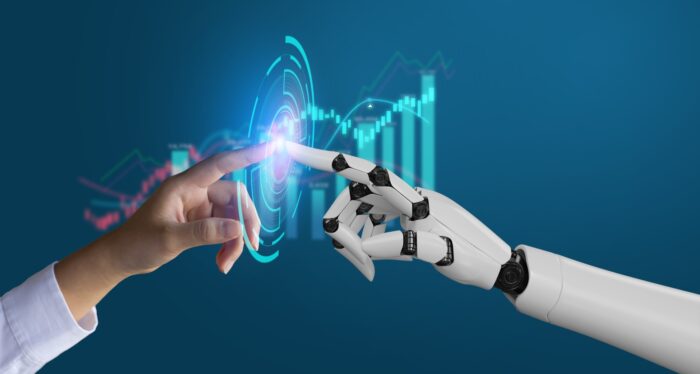RankBrain is a machine learning algorithm that was developed by Google to help improve its search engine results. It is the first major application of artificial intelligence (AI) in search engine optimization (SEO). RankBrain works by analyzing user queries and determining which webpages are most likely to answer those queries. It then ranks those webpages accordingly so that users can find the best possible results. RankBrain has been shown to be very effective in improving the quality of search results, and it has become an integral part of Google’s ranking system. In this article, we will explore how RankBrain works, its implications for SEO, and what SEOs should be doing to stay ahead of the curve.
How Does RankBrain Work?
Google’s RankBrain is a machine-learning artificial intelligence system that helps Google interpret user queries and determine the best search results to display. RankBrain works by using algorithms to analyze and interpret user queries and search results. It then uses this analysis to assign relevance scores to each of the search results, which helps Google rank them in order of relevance.
RankBrain looks at how users interact with the search engine results page (SERP). It takes into account factors such as how long users stay on a particular result page, whether they click through to other pages, or if they come back to the same result multiple times. This data is then used to improve future searches for similar queries, and adjust rankings accordingly.
RankBrain also looks at the context of a query when determining relevance. For example, if someone searches for “New York City” it may assume that they are looking for information about the city itself, rather than a business in New York City. By understanding this context, RankBrain can provide more relevant search results than traditional keyword-based algorithms.

RankBrain also uses natural language processing (NLP) techniques to better understand user intent. NLP allows RankBrain to identify patterns in user queries and understand what users are really asking for when they enter a query into Google’s search box. This helps ensure that users get the most relevant answers to their questions, regardless of how they phrase them.
Overall, RankBrain is an important part of Google’s ranking algorithm and helps ensure that users get the most relevant search results possible. By using machine learning algorithms and natural language processing techniques, RankBrain can quickly identify patterns in user queries and deliver more accurate results than traditional keyword-based algorithms could ever hope to achieve.
RankBrain is a machine-learning system that helps Google interpret user queries and assign relevance scores to search results. Interesting. RankBrain takes into account factors such as user interaction with SERP, context of query, and natural language processing to deliver more accurate results.
Is Machine Learning the Future of Google?
Google’s recent introduction of RankBrain, its machine learning algorithm, has caused a lot of speculation about the future of search engine optimization (SEO). RankBrain is a type of artificial intelligence (AI) that has been designed to help Google better understand queries and deliver more relevant results. It uses natural language processing (NLP) to interpret user queries and match them with the most appropriate webpages. As a result, RankBrain has become an important part of Google’s search algorithm, and many experts believe that it could eventually replace manual interaction in SEO.
Advantages of Machine Learning for SEO
Using machine learning algorithms like RankBrain can have several advantages for SEO. For example, it can help Google better understand user intent, which is particularly important for long-tail keywords. This means that users searching for those keywords will be more likely to find what they are looking for quickly and easily. Additionally, machine learning algorithms can also help to identify patterns in user behavior that may not be evident to humans. This can provide valuable insights into how people interact with search engines, allowing SEO professionals to optimize their websites accordingly.
Limitations of Machine Learning for SEO
However, there are also some potential drawbacks to using machine learning algorithms in SEO. One potential concern is that these algorithms may not be able to accurately identify complex patterns in user behavior or interpret subtle nuances in language. Additionally, if the algorithms are not properly calibrated or maintained, they could lead to inaccurate results or incorrect rankings. Finally, since machine learning relies on large amounts of data to work effectively, it may not be suitable for smaller websites that don’t have access to such data sets.
Overall, while machine learning algorithms like RankBrain offer some advantages for SEO professionals, there are also some potential drawbacks that should be considered before relying too heavily on them. As such, it is important for SEO professionals to understand both the potential benefits and risks associated with using these types of algorithms in order to make an informed decision about whether or not they should be used as part of their overall strategy.
| Advantages of Machine Learning for SEO | Limitations of Machine Learning for SEO |
| Better understanding of user intent | Inaccurate identification of complex patterns in user behavior |
| Identifying patterns in user behavior | Incorrect rankings due to improper calibration or maintenance |
| Valuable insights into how people interact with search engines | Not suitable for smaller websites without large data sets |
Is There a RankBrain Score?
Google has been tight-lipped about the exact workings of RankBrain, and whether or not there is a numerical score associated with it. It is known that RankBrain is an artificial intelligence system that uses machine learning to help Google better interpret queries and provide more relevant search results. However, there is no clear evidence that there is a specific numerical score associated with RankBrain.
RankBrain as a Ranking Factor
Google has stated that RankBrain is one of the many ranking factors used in their algorithm, but they have not revealed exactly how much weight it carries compared to other factors. It is possible that RankBrain may play a larger role in certain searches, while being less important in others. This makes it difficult to determine if there is any numerical value associated with it.
RankBrain and SEO
Although there may not be a numerical score associated with RankBrain, SEOs should still take note of its importance. As an artificial intelligence system, RankBrain can learn from user data and adapt to changes in search behavior over time. This means that SEOs need to ensure their content remains relevant and up-to-date in order to stay competitive in the SERPs. Additionally, SEOs should also focus on providing users with a positive experience when visiting their website, as this could also influence how well their pages rank for certain keywords.
Google has not revealed if there is a numerical score associated with RankBrain, but it is an important ranking factor for SEOs to consider when optimizing their content.
Will all Manual Interaction Stop with RankBrain?
RankBrain is a machine learning algorithm that Google uses to process search queries and improve search results. The algorithm is part of the Hummingbird update, which was released in 2013. RankBrain looks at user-generated signals such as click-through rate (CTR) and dwell time to determine how relevant a particular result is for a given query. While RankBrain does not replace manual interaction, it does reduce the need for manual intervention in certain cases. It can also help Google understand more complex queries and provide better results.
How Does RankBrain Work?
RankBrain works by analyzing user behavior when they interact with search results. It looks at factors such as the amount of time people spend on each page, which links they click on, and how often they return to the same page. By analyzing this data, it can determine which pages are most relevant to the query and rank them accordingly. It also takes into account other signals such as backlinks and content relevance.
Does RankBrain Replace Manual Interaction?
No, RankBrain does not completely replace manual intervention. In certain cases where it can accurately predict user behavior, it may be able to provide better results than manual intervention alone. However, there are still many cases where manual optimization is necessary in order to achieve optimal rankings. For example, if a website has low-quality backlinks or content that isn’t related to the query, then manual optimization will be required in order to improve its rankings.
Is Machine Learning the Future of Google?
Yes, machine learning is becoming increasingly important for Google’s ranking algorithms. As technology advances and users become more sophisticated in their search habits, Google needs to rely on machine learning algorithms like RankBrain in order to keep up with these changes and provide accurate results for users’ queries. While manual optimization will still play an important role in SEO going forward, machine learning algorithms like RankBrain will become increasingly important for achieving optimal rankings.
Is HTTP2 Important to Rankings?
HTTP2 is an important factor in website rankings because it can significantly improve the speed of a website. It is a new version of the Hypertext Transfer Protocol (HTTP) that was designed to make websites faster and more efficient. HTTP2 allows multiple requests to be sent at once, instead of having to wait for each request to finish before sending the next one. This means that webpages will load much faster, which can have a positive effect on search engine rankings. Additionally, HTTP2 can help reduce server load and bandwidth usage, meaning websites are able to handle more traffic without slowing down or crashing.
Google has also been pushing for the adoption of HTTP2 as part of its efforts to improve website performance. They have stated that they may take page speed into account when ranking websites, so it is important for SEOs to make sure their sites are using the latest version of HTTP. Additionally, Google has announced that HTTPS will be given preference over regular HTTP in search results, so it is important for SEOs to make sure their sites are secure as well.
In order to ensure that a website is using HTTP2, SEOs should check with their hosting provider and confirm that they are running the latest version of the protocol. They should also test their site using tools such as Google PageSpeed Insights or GTmetrix in order to see if there are any issues with page speed or other technical aspects that could be affecting their rankings. By making sure their sites are up-to-date with the latest protocols and technologies, SEOs can ensure they remain competitive in search engine rankings.
What Should SEO’s be Working On?
search engine optimization (SEO) is a strategy used to increase the visibility of websites in search engine results. It is an important part of any digital marketing strategy and should be incorporated into all online campaigns. SEO involves optimizing content, website structure, and link building to help improve rankings and drive more organic traffic to a site.
Optimizing Content
Content optimization is essential for SEO success. This includes crafting keyword-rich titles, meta descriptions, headings, body copy, and other page elements to ensure that they are relevant to the topic at hand and optimized for search engines. Additionally, content should be regularly updated with fresh content to keep users engaged and boost search engine rankings.
Website Structure
The structure of a website is also important when it comes to SEO. Having a well-structured website helps make it easier for search engine crawlers to index pages and understand their content. Additionally, having a clear hierarchy makes it easier for users to navigate the site which can lead to better user experience and improved rankings.
Link Building
Link building is another key component of SEO success. Link building involves creating backlinks from other sites that point back to your own site. These links are seen as “votes” from other sites which can help increase your ranking in search engine results pages (SERPs). It is important to create quality links from reputable sources as this will help boost your credibility with search engines.
Monitoring & Analyzing Performance
Finally, SEOs should be monitoring their performance on an ongoing basis in order to adjust their strategies accordingly. This involves analyzing analytics data such as clicks, impressions, bounce rates, time on page, etc., in order to identify areas of improvement or opportunities for growth. Once these areas have been identified, adjustments can be made accordingly in order to maximize the effectiveness of SEO efforts.
Overall, SEOs should focus on optimizing content, website structure, link building, and monitoring & analyzing performance in order to maximize their chances of success with search engine optimization. By following these steps they will be able to ensure that their websites are optimized for maximum visibility in SERPs and that they are driving more organic traffic than ever before!
Conclusion
RankBrain is an important part of Google’s algorithm and it is here to stay. It is a great tool for search engine optimization (SEO) professionals, as it provides them with more data to work with when optimizing websites. RankBrain does not replace manual intervention entirely; however, it does take some of the burden off of SEO experts by providing more accurate information. Ultimately, SEO professionals should be focusing on creating content that is useful and relevant to users, as well as making sure that their website is optimized for mobile devices. Newsletter Pro has been in the business of designing, printing and mailing newsletters for over a decade now and offers a range of direct mail products that complement newsletters such as targeted free-standing inserts, postcard campaigns, celebration cards and unique solutions like the Referral Builder program. With RankBrain being part of Google’s algorithm, businesses need to make sure their marketing strategies are up-to-date in order to increase their visibility online and reach their full potential.






